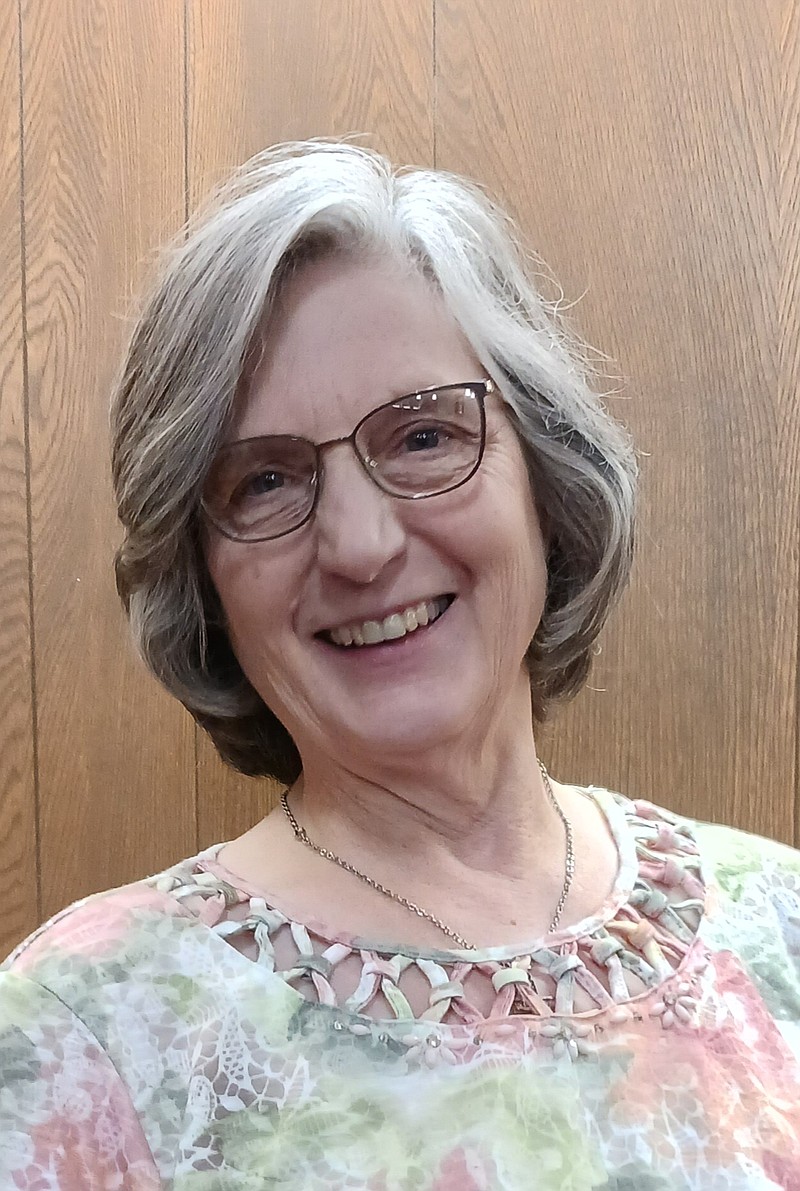By Joan Hershberger
Folks drove hours, even days, to gather in Texarkana to talk about their old, black sewing machines at the TOGA (Treadle Gathering and Academy.) Everyone there collects, repairs and/or uses old black sewing machines like their grandmothers and great-grandmothers once did. These all-metal machines weigh 40 to 50 pounds.
Hubby and I sat down with a nuclear scientist, The Machine Doctor. She studied our Spartan. "The fabric does not feed evenly; I think it's the stitch regulator," I said.
"It's the feed dogs. They rise less than the thickness of a dime," she said. Feed dogs found on either side of the needle hole pull the fabric forward for stitching.
We ordered a replacement feed dog to install at home.
Waiting for a class, I asked the woman next to me, "How many machines do you have?"
She thought for a moment, "I have five. I use an industrial machine to sew upholstery."
My class emphasized rule one for repairing the tension plates: "Don't take it apart. If it needs cleaning, fold a dollar bill in half and slide it between the tension plates. If you must take it apart, take pictures of every piece before placing it in an egg carton." That rule would have saved my husband and I many hours.
After class, I admired a carefully restored treadle sewing machine and asked the owner, "How many machines do you have?"
"Well, if I sell this machine and the other one I brought today, I will have 48 at the house." Fifty machines. I tried to imagine where I would put 50 machines. I took four to the TOGA, including one in a cabinet. Portables fit on a shelf. Cabinets need floor space. Even fifty portables would swamp my shelves!
We took our chrome enhanced Monarch machine to the doctor. "The stitch regulator does not work," I said.
"The knob on that fancy regulator cover is frozen. Just take it off and leave it."
"But I like the 'Cadillac' trim on that machine."
"They might have a working part at the Fred Sanford shop in Michigan," the doctor said. "Like the TV show, the shop has a huge collection of used sewing items for resale." We put the machine back in our car.
I went to chat with a woman opening a highly polished, wooden carrying case. It did not look like Grandma's domed lid portable.
"I got it from Germany," she said proudly.
"How many machines do you have?" I asked.
"Two hundred-fifty, most are full sized," she said.
"Where do you keep all of them?"
"Well we have a 1,500 square foot basement and two stories above that. I have them through the house," the avid hobbyist said.
I attended another class. My husband chatted with the men, including one wearing a CEO hat (Carries Everything Out). Some carried machines. Some fixed machines. Some talked machines.
After lunch and a quilt block exchange, the host began the raffles. Most bought blue tickets for one of two homemade quilts. Red tickets were for the donated items covering three tables - one table held 15 vintage machines needing repairs. I studied three treadle heads with well preserved gold and red decals and kept telling myself, "You don't need them. You don't have a space for them."
Still, that fifty year old green machine at the end... "Hmm, I have always wanted that green machine..."
Two tables held a plethora of notions, fabric, patterns and household items.
By the drawing's end, every item found a home. I came away with more sewing machine accessories. My husband chose an exercise bike. The CEO helped him load it in the van. They loaded the cabinet machine I sold to a woman just as we started to reload it. Before we left, I grabbed the portable, free, green machine and bought a repaired, working Singer 99 in a wooden domed case.
I may not keep either very long, but before I release them, I will use them to make a dress or two and then be quite glad I don't need a guy wearing a CEO hat to move them any more.
Joan Hershberger is a former staff writer for the El Dorado News-Times and author of "Twenty Gallons of Milk and other columns from the El Dorado News-Times."
